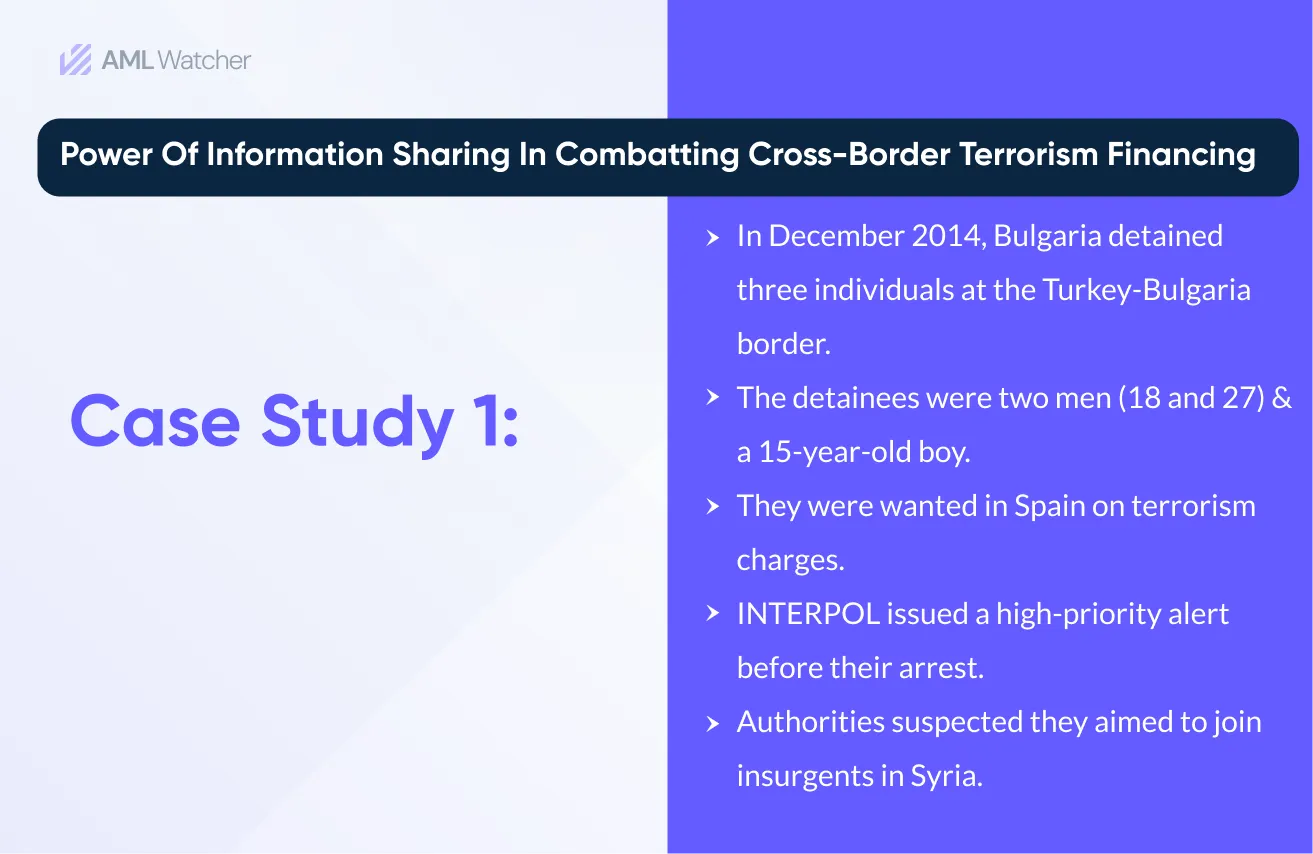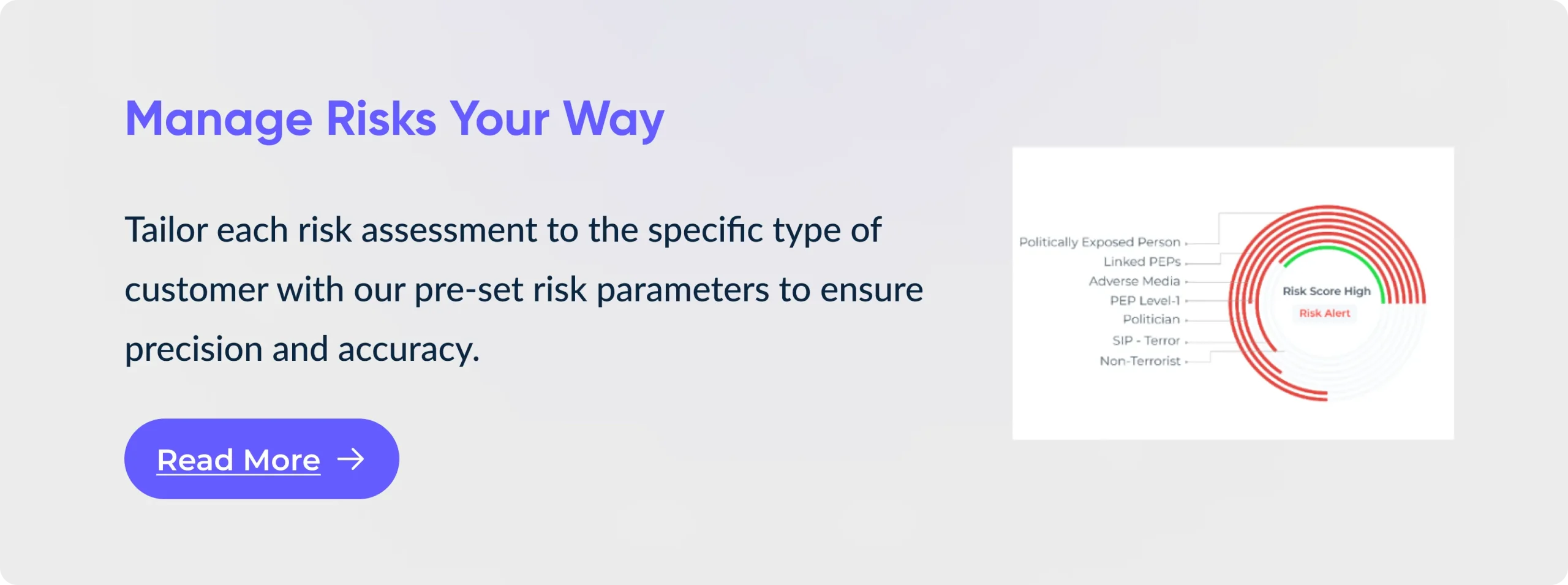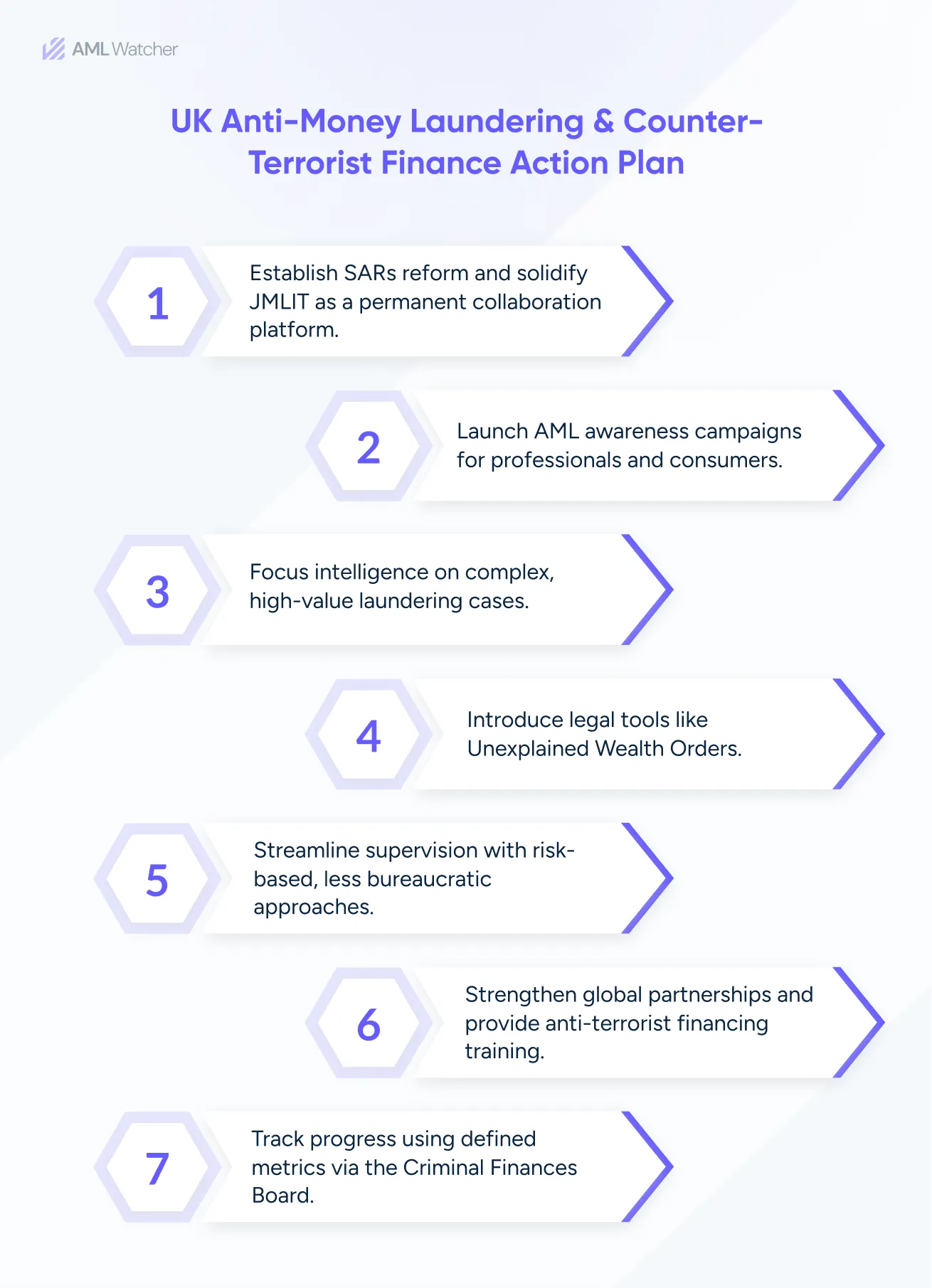
Understanding Terrorism Financing Through FATF’s Insights And Countermeasures
“Approximately 210,454 terrorist attacks occurred globally between 1970 and 2020”.
Global Terrorism Database
FATF has always been focused on Countering the financing of terrorism, particularly since 2015. As terrorism has evolved and become more complicated to counter, terrorist attacks have increased globally, and terrorist threats have been issued by organizations such as the “Islamic State of Iraq and the Levant (ISIL/Da’esh) and by Al-Qaeda and their affiliated terrorist organizations.”
The Financial Action Task Force (FATF) has established multiple strategies for Counter-Terrorism Financing to manage evolving risks.
According to FATF’s guidelines, countries must continuously apply risk assessment measures to understand “terrorist financing risks,” focusing on cross-border fund transfers and their role in supporting terrorist activities.
Wondering how terrorism financing affects financial institutions and manipulates the global financial system? Keep reading to gain a broader perspective.
Why not start with an in-depth discussion of the concepts of terrorism financing and counter-terrorism financing?
What is Terrorism Financing (TF)?
As defined in FATF’s Recommendation 5, countries are required to criminalize “terrorist financing (TF)” and classify it as a “predicate offense for money laundering.”
“Terrorism financing refers to the provision of financial resources to support terrorist activities, even if those individuals or organizations are not directly or indirectly involved in terrorist activities.”
According to the Interpretive Note to Recommendation 5, terrorist financing offenses should encompass all aspects of individuals who deliberately deliver or gather funding or other valuable assets.
This includes any methods that are directly or indirectly associated with bad intentions, specifically regarding the illegal use of these assets or awareness that they will be used illegally in various situations, whether fully or partially, (a) to carry out a terrorist act(s); (b) by a terrorist organization; or (c) by an individual terrorist.”
FATF Insights To Assess Terrorist Financing (TF) Risk
FATF has released requirements for assessing terrorist financing (TF) risk;
-
Implementing a Risk-Based Approach
The fourth round of FATF evaluation (2013 onwards) mandates implementing a risk-based approach by understanding the risk level of each jurisdiction, evaluating CFT compliance based on FATF recommendation 1, and checking the effectiveness of compliance with FATF Immediate Outcomes.
-
Responsibilities Defined Under Recommendation 1
As per “Recommendation 1 (R.1),” countries are obliged to “identify, assess, and understand” TF risks and designate an authority to coordinate actions for risk assessment.”
A risk-based approach (RBA) should ensure the mitigation of risks by providing tailored Counter-Terrorism Financing (CTF) measures according to identified risks in jurisdictions.
“Ongoing Terrorist Financing (TF) risk assessment” should provide guidelines for improvements or modifications in AML/CFT laws for better outcomes.
Countries should share findings of risk assessment reports to “self-regulatory bodies (SRBs), financial institutions (FIs), and designated non-financial businesses and professions (DNFBPs).”
What is CFT?
CFT stands for Countering the Financing of Terrorism, and the main aim of CFT measures is to prevent terrorists from misusing financial platforms for their illegal activities and to stop them from “collecting, storing, and transferring illicit money” that helps in terrorist financing.
CFT is one of the crucial aspects of international efforts to block the financial flow that assists in illicit activities.
“Every challenge in combating TF is an opportunity to build dialogue between the public and private sectors. The outcomes of the dialogue will define how successfully we will overcome the emerging threats.”
-Gabija Stanaitytė, Senior AML Specialist at UAB Pervesk
Terrorist financing (TF) contributes to destabilizing societies, destroying peace, and threatening lives, and robust CFT compliance is necessary to bring peace and stabilization to society.
How Does CFT Compliance Protect Against the Threat of Terrorist Financing (TF)?
As per the FATF report of “Terrorist Financing Risk Assessment Guidance” in July 2019. CFT compliance is vital in “identifying and preventing terrorist financing risks.”
It is mandated that financial organizations implement an AML/CFT framework to identify and report suspicious activities related to financial crimes such as money laundering (ML) and terrorism financing (TF), as well as keep updated on risks particularly associated with their countries.
A robust CFT compliance prevents terrorist groups from invading financial systems and reduces the risks of terror financing. Thus, effective CFT measures are a must-have in countering the financing of terrorism.
Compliance with UN Security Council Resolutions
It is mandated that countries align with “UN Security Council resolutions” for counter-terrorism financing as per Recommendation 6.
Countries must “freeze the assets or funds” of entities mentioned in “Chapter VII of the UN Charter” as financial sanctions to block the available funds used for them.
Key Points on Sector-Specific Terrorist Financing (TF) Risks
FATF published a report in 2015 on “Emerging Terrorist Financing Risks.” Its findings show that the banking industry is most attractive among others to terrorist groups as it’s an easy and quick way to transfer illegal funds worldwide.
Individuals who are involved in terrorism financing (TF) usually use small transactions to mix illicit funds with “regular financial flows smoothly,” which makes detection difficult under CFT banking systems.
Essential Factors in Assessing TF Risk in Banking
FATF report on “Terrorist Financing Risk Assessment Guidance” mandates that banks identify how terrorist networks exploit the banking sector and connections linked with foreign individuals involved in terrorist financing activities.
- Different banking services provide various levels of terrorist financing risks, and it’s essential to identify the possible specific vulnerability or threat in banking systems for robust CTF compliance programs.
- Some service-specific risks, such as previous FATF reports, have found misuse of “pre-paid cards” and “person-to-person funds transfer” for terrorism financing activities.
- In “correspondent banking,” the nested accounts don’t provide thorough data about the senders and recipients for international funds transfer and thus increase the Terrorist financing (TF) risk in CFT Banking.
- High-risk clients in banks require enhanced CFT compliance measures, such as “detailed screening and contextual analysis,” to determine and mitigate TF risks.
- Banks are required to submit reports to relevant authorities after detecting suspicious activity. A lack of “Suspicious Transaction Reports (STR) Filings” or a low volume indicates that banks have weaknesses in CTF compliance.
- Implementing targeted sanctions, internal controls, and thorough due diligence are necessary for CTF Compliance, and weakness in these areas makes the banks susceptible to Terrorism Financing (TF).
- The lack of collaboration between different sectors for sharing information related to terrorist financing creates difficulties in fulfilling the CFT Requirements.
Money Value Transfer Services (MVTS) Sector Vulnerabilities in Terrorist Financing
Findings of FATF reports from 2008 and 2015 showed that the “Money Value Transfer Services (MVTS) / Remittance Sector” has been misused for transferring illicit money and is vulnerable to terrorist financing (TF).
Banking service is often restricted in “conflict-affected regions,” where remittance providers provide financial services and are considered primary sources for money transfers across borders.
The Money Value Transfer Services (MVTS) sector has “Cash-intensive and informal operations” that enhance the vulnerabilities to terrorist financing (TF).
Exploitation of Natural/Environmental Resources for Terrorist Financing
Terrorist organizations like “ISIL, al-Shabaab, and al-Qaeda” generate considerable financial resources to support their operations by taking advantage of various valuable commodities found within their controlled territories.
They exploit natural resources such as oil, a vital funding source due to its high global demand. Additionally, they capitalize on the extraction and trade of precious minerals like gold and industrial materials such as “charcoal and talc.”
The “lustrous lapis lazuli,” sought after for its beauty, is among the resources they utilize to finance their activities.
Countries evaluate the terrorist finance risks by monitoring “transport routes, extraction sites, trade handling, export routes, and the regulatory framework governing precious metals and stones.”
Non-Profit Organisations (NPOs) and Terrorist Financing Risk
Recommendation 8 (R.8) requires countries to assess the risks of terrorist financing (TF) for Non-Profit Organizations (NPOs) outlined in the FATF report by implementing a risk-based approach to prevent difficulties in legitimate non-profit activities.
A clarification was given by Revisions in “June 2016” that all NPOs don’t impose terrorist financing risks, and only a few impose some risks.
It is essential for ensuring CFT compliance in NPOs to work together with government agencies, financial groups, and non-profit organizations and to keep up to date with new risks in the NPO sector.
Understanding CFT Requirements for Financial Security
FATF recommendations require;
Customer Due Diligence
- Financial institutions must not accept accounts linked to fake profiles or names.
- Customer Due diligence (CDD) must apply in the following scenarios:
- When a customer comes to the bank to establish a business relationship or open an account
- Performing occasional transactions that are “Exceeding USD/EUR 15,000 and involve wire transfers.”
- Implement CDD measures when any transaction is suspected of being linked to money laundering (ML) or terrorist financing (TF).
- When previously collected information seems doubtful or fake.
- Screen and verify the client’s information using authentic and legal data issued by legal authorities of the relevant country.
- Identify the ultimate beneficial owner (UBO) and verify their identity after understanding its legal requirements.
- The purpose and nature of business relationships should be understood thoroughly.
- Ongoing monitoring ensures that customer risks are addressed, making it an essential requirement in Customer Due Diligence (CDD) measures.
- Submit a suspicious activity report for any transfer that appears to be suspicious.
- CDD measures are required for all new and existing clients
- If Financial institutions are not fulfilling the CDD requirements, they should:
- Not open an account in the bank or start a relationship with higher-risk clients
- End any current ongoing business relationship
Record-Keeping
Critical requirements for record-keeping for terrorist financing are explained as:
- Financial institutions must retain records of domestic and international money transfers for at least five years.
- Organizations must be prepared to provide requested information quickly to regulated authorities.
- Transaction records should cover the amount and types of involved transactions and should include all the necessary information, thus providing evidence if criminal prosecution requires any.
- CDD records should have copies of the official data verifying identities such as “passports, identity cards, driving licenses, etc.”
- Analyze findings to determine the reason for complicated or large money exchanges.
- It is a legal obligation for financial institutions to maintain these records and provide them to relative authorities for CFT Compliance.
Reporting of Suspicious Transactions
- If a financial institution suspects that a transaction is linked to illicit activities, such as terrorist financing (TF), or is considered “proceeds of criminal activity,” it is required under Counter-Financing of Terrorism (CFT) laws to report any suspicious activity promptly.
- This reporting must be made to the Financial Intelligence Unit (FIU) to fulfill the requirements for suspicious transaction reporting (STR) as part of CFT compliance.
Implementation of Targeted Financial Sanctions
Countries are mandated to enforce target financial sanctions regimes according to “United Nations Security Council (UNSC) resolutions” for countering the financing of terrorism (CFT).
They are asked to freeze the assets and properties of individuals who are involved in Terrorism Financing (TF) without delaying any further.
Immediate action is required to ensure that any assets’ availability, directly or indirectly, is restricted to terrorist networks to inhibit terrorism Financing (TF). Financial sanctions target individuals identified by the United Nations Security Council (UNSC) “under Chapter VII of the UN Charter.”
Countries can designate individuals under “Resolution 1373 (2001)”, which addresses the meaning of terrorism financing. The practical implementation of sanctions solutions assists in Countering the financing of terrorism (CFT).
Now, are you thinking of adopting a risk-based approach to counter-terrorism financing under AML regulations but requiring credible and efficient screening data providers that will cater to your needs?
Your search may end here!
How?
AML Watcher’s Data Coverage: A Powerful Ally in Counter Terrorism Financing
AML Watcher offers a reliable AML screening solution that offers unmatched data coverage, ensures to tackling of CTF challenges, and screens every profile for potential terrorist financing.
Its robust data coverage tackles CTF challenges by,
Comprehensive AML Data Coverage
AML Watcher uses 100,000+ reliable data sources, including 1,300+ diverse watchlist databases, 200+ sanction regimes, and 5,000+ reputable media sources, to share extensive coverage and ensure that individuals or entities involved in terrorism financing are flagged quickly. This wide coverage decreases the possibility of missing any possible threats, including those in high-risk or under-regulated areas.
Real-Time Data Updates
AML Watcher’s real-time updates ensure that institutions are immediately aware of newly flagged individuals or entities, allowing them to stay ahead of growing terrorism financing problems. This reduces exposure to evolving risks and assures continuing AML compliance.
Risk Scoring and AML Screening
The AML Watcher’s custom risk score system allows institutions to prioritize high-risk persons by assigning risk levels based on a variety of features including location and political exposure. This ensures that resources are directed toward the most essential cases, hence improving the effectiveness of anti-terrorism financing measures.
Adverse Media Screening
AML Watcher’s adverse media screening helps uncover hidden risks by scanning local and international news sources for negative media related to terrorism financing. This feature provides an additional layer of protection by flagging potential threats that might not appear on traditional watchlists.
Customer Due Diligence (CDD) Screening
AML Watcher screens customers against worldwide watchlists, sanctions lists, and negative media, ensuring that only legitimate individuals and businesses are onboarded. This decreases the likelihood of connecting with people or organizations involved in terrorism financing from the very start.
Enhanced Due Diligence (EDD) Screening
AML Watcher conducts thorough background screening and continuous monitoring of high-risk customers, such as PEPs or individuals from high-risk jurisdictions. This targeted strategy ensures that potentially dangerous profiles are thoroughly examined, lowering the likelihood of undetected terrorist financing activities.
AML Name Screening
AML Watcher’s name-matching screening involves cross-referencing customer names with global sanctions lists, watchlists, and adverse media databases. AML Watcher employs phonetic matching to track down persons with similar-sounding names, lowering the risk of missing suspected terrorist financiers owing to name variations.
Name-screening solutions help detect high-risk individuals, preventing them from utilizing your institution for illegal financial transfers.
Screening in Less-Regulated Jurisdictions
AML Watcher’s screening solution targets less-populated and less-regulated areas, where terrorist financiers frequently exploit legal vulnerabilities AML Watcher detects high-risk individuals and activities, by screening these regions, ensuring compliance and eliminating illegal financial flows associated with terrorism.
We are here to consult you
Switch to AML Watcher today and reduce your current AML cost by 50% - no questions asked.
- Find right product and pricing for your business
- Get your current solution provider audit & minimise your changeover risk
- Gain expert insights with quick response time to your queries













